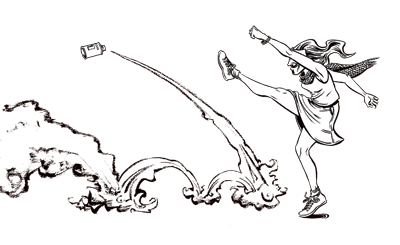The native American pueblo into which Theo has been welcomed (?) is fictional, but I modeled it after the villages of the Hopi. The Hopi are from northeastern Arizona, so placing a similar tribe in southern New Mexico is a bit of a stretch, but I have been so fascinated by the Hopi since I first read about them in a middle school American history textbook that I couldn’t pass up the opportunity to include them in my desert epic. Their art and culture, the songs and dances of their religion, their groovy adobe villages that spring out from the mesas like mushrooms from a tree stump – it’s all extremely cool… you know, when you get past the miserable tragedy. And even if it would remain untranslated, I really wanted to include some snippets of the Hopi language.
I was reading reviews online for the Hopi Dictionary/Hopiikwa Lavaytutuveni, which apparently is one of the best translation-dictionaries of any language in the entire linguistics community. I knew I’d never be able to afford this sucker, but to my delight there was a copy at the central Multnomah County Library.
It is indeed an exhaustive tome. But since it’s only a dictionary and not a book of grammar, I had no way of constructing the sentences I wanted to place in the mouths of my characters. My compromise was to look up individual words that might possibly relate to my desired dialogue, and see if the example sentence could conceivably work. I was expecting “Where is Maria? Maria is in the library.” What I got were complex and interesting sentences which proved surprisingly appropriate to my story. Here are the dictionary example sentences used in my comic, which the elder uses to shoo Theo away on page 96:
“Yupáy, yamáku’u. Nu’ pay son pew Pahanmuy tangatani” – Go on, get out. I’m not going to admit Anglos here.
And which the Indians murmur while gathered around the Theo as he eats on page 97:
“Velakaana? Kastiilam?” – An American? A Mexican? (The Hopi word for “Mexican” is the same as the word for “Spaniard,” and you can see that it’s derived from the word “Castilian.”)
“Pam so’oosouik qömuit akw tsoqa’asi’y tangwu.” – He is painted all over with black body paint. (no, those are tattoos!)
“Pas pam himu son suup haqam nakwhani’y tangwu.” – He’s one who just can’t seem to stay in any one place. (This could be Theo’s entire biography. Or Tonya’s!)
“Puma pas qu atsat lalakharum.” – He is excessively skinny. (fair enough)
“Um okiw hin ewayhoya.” – You poor, ugly little thing. (Hey!)
So hopefully from these few rudimentary snippets, you can see there’s a lot more to this language than the “Koyaanisqatsi” of Phillip Glass’s film score.





